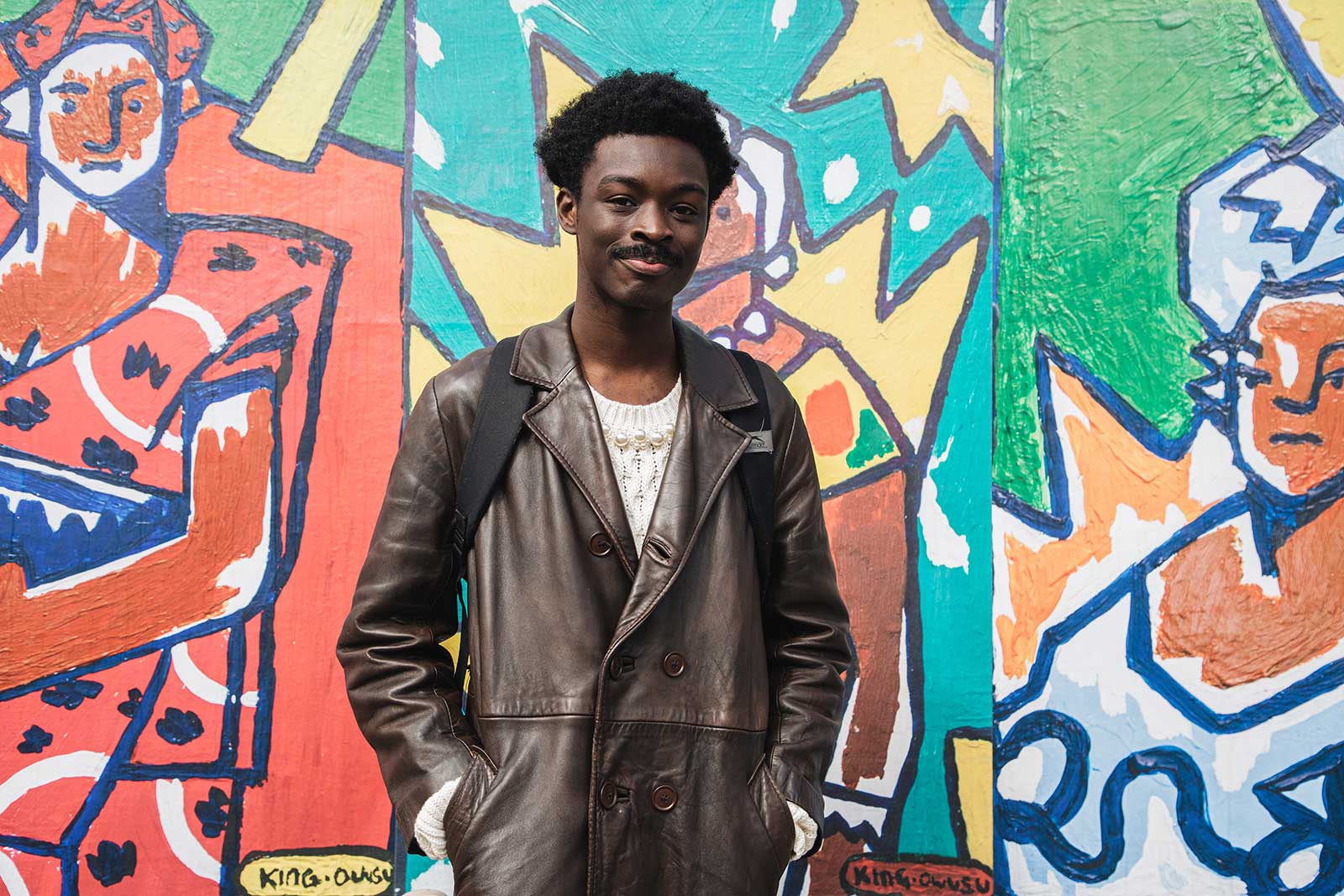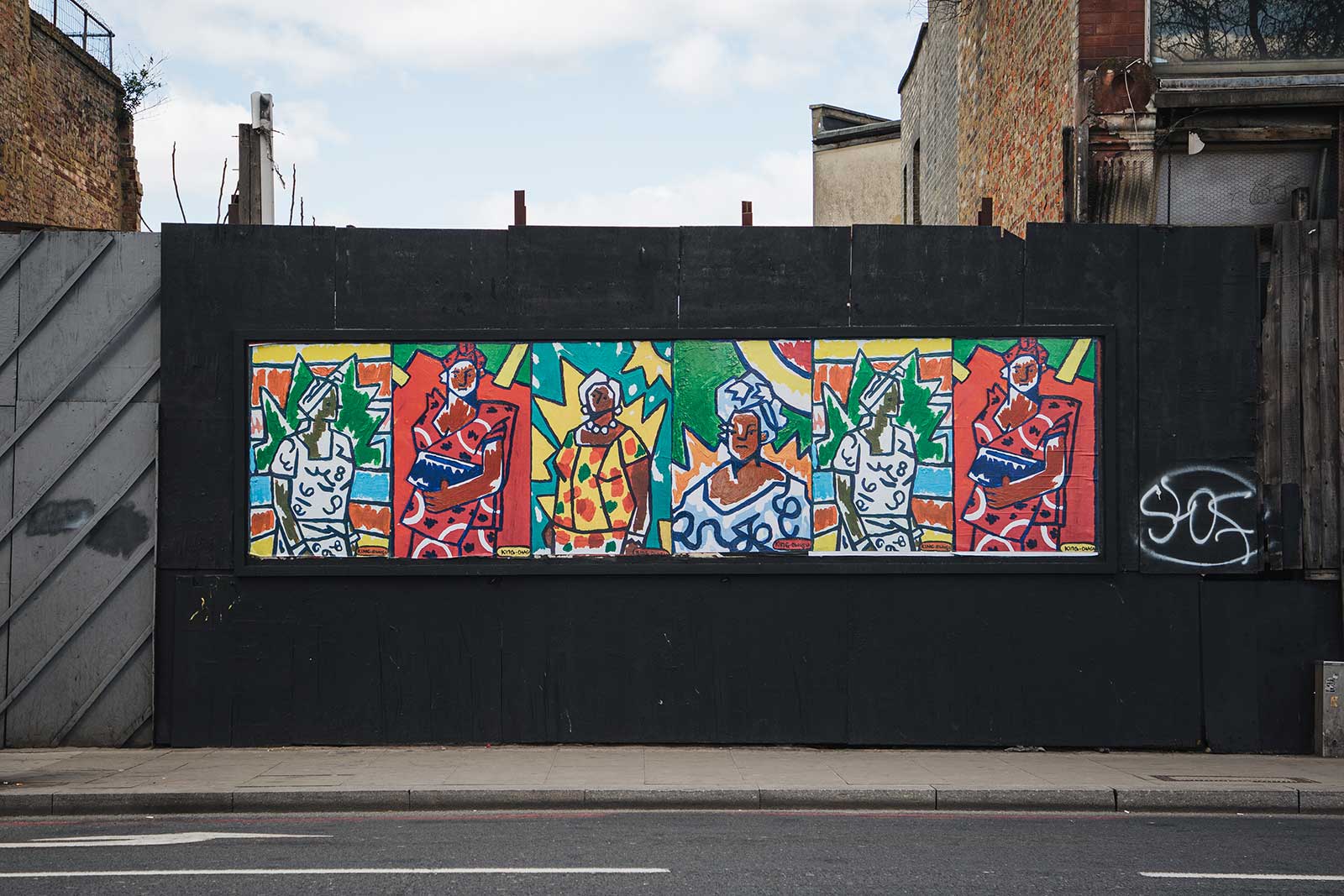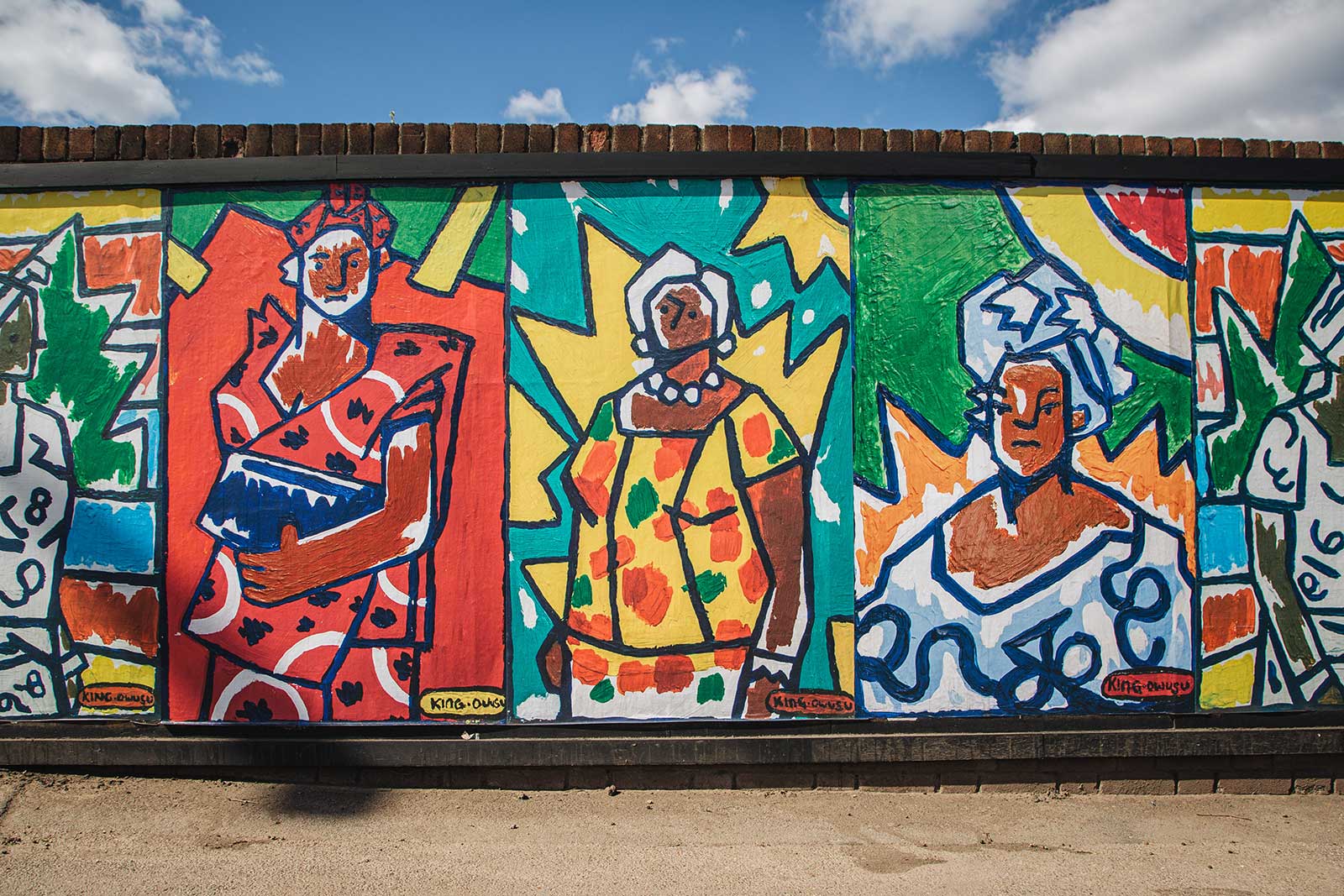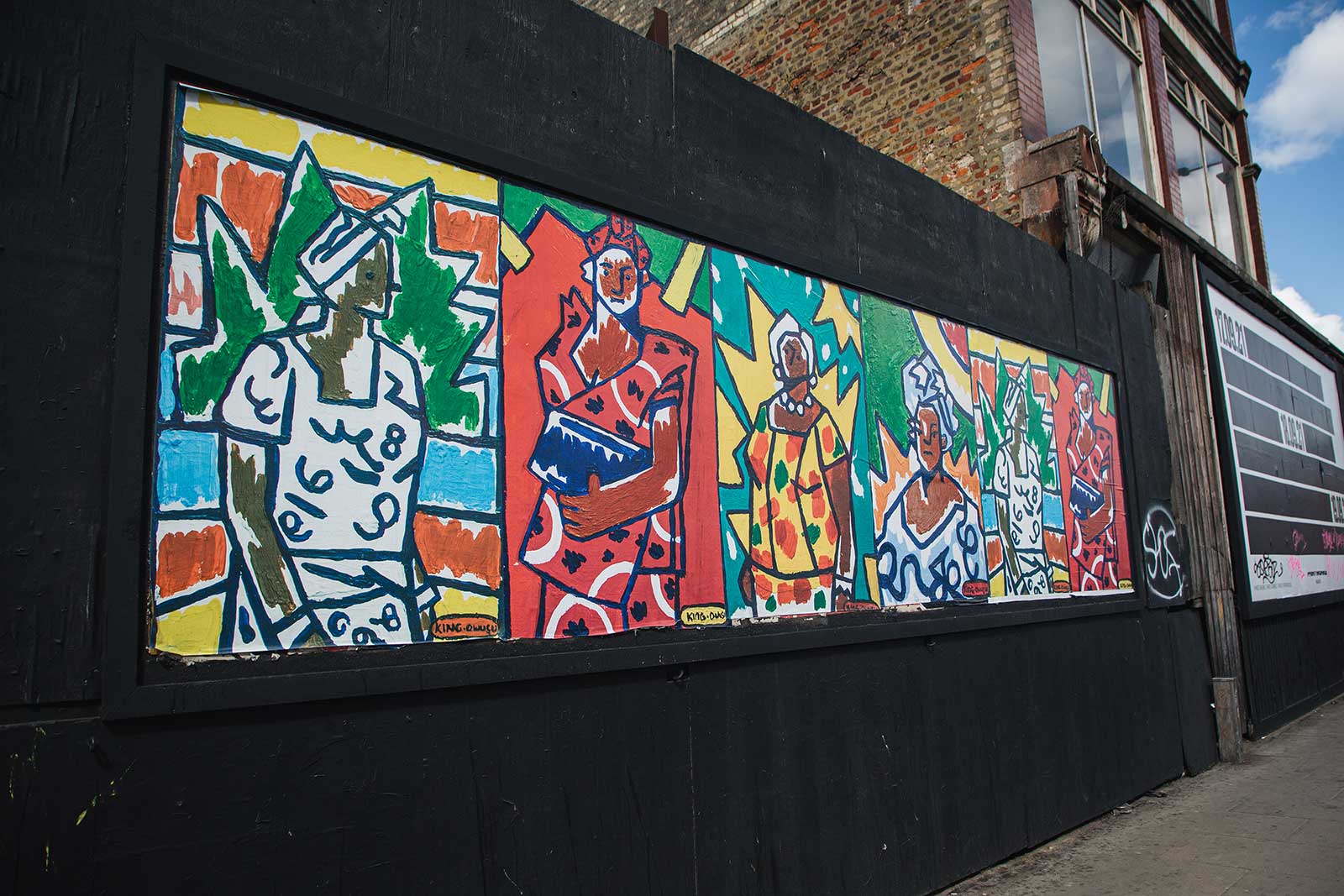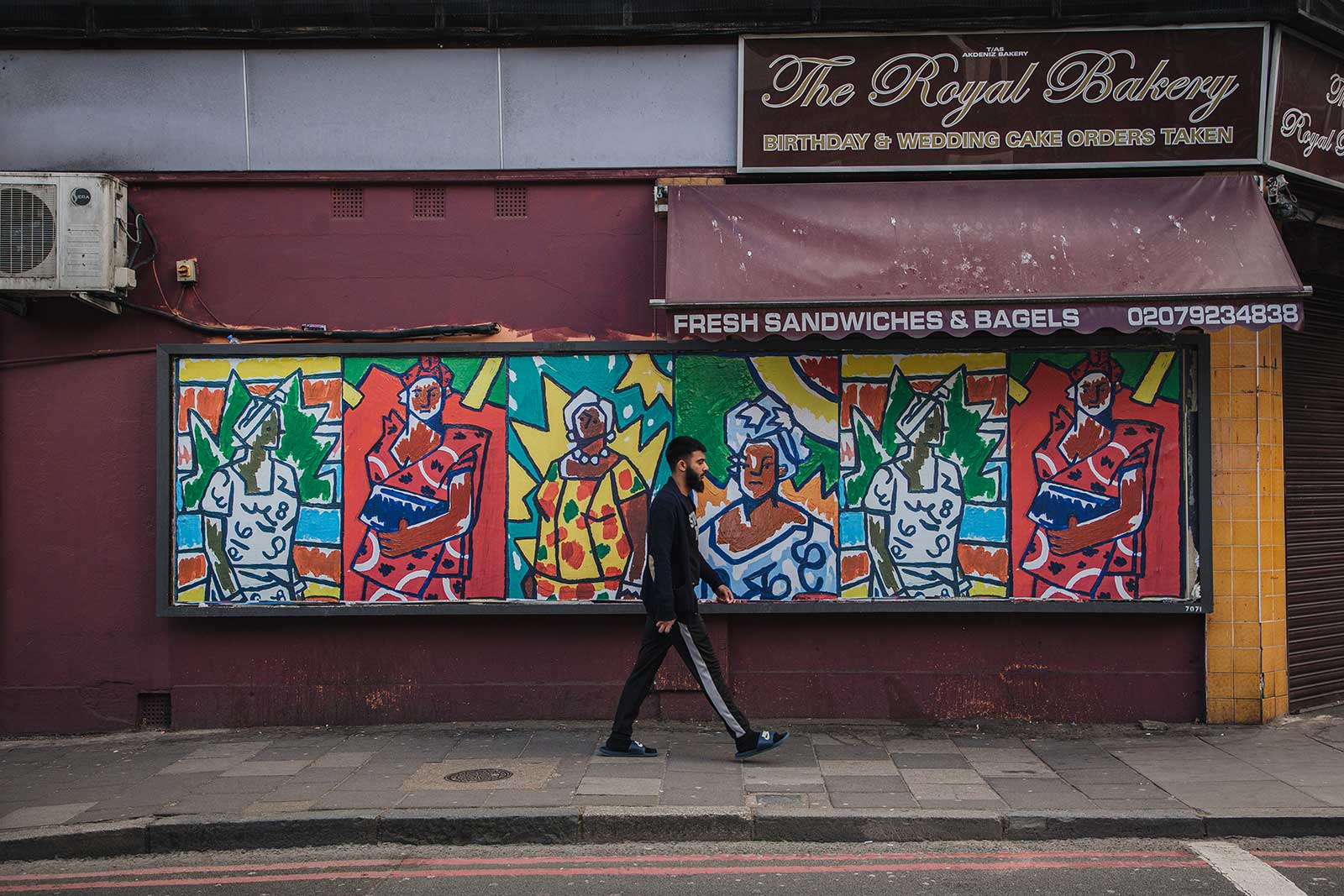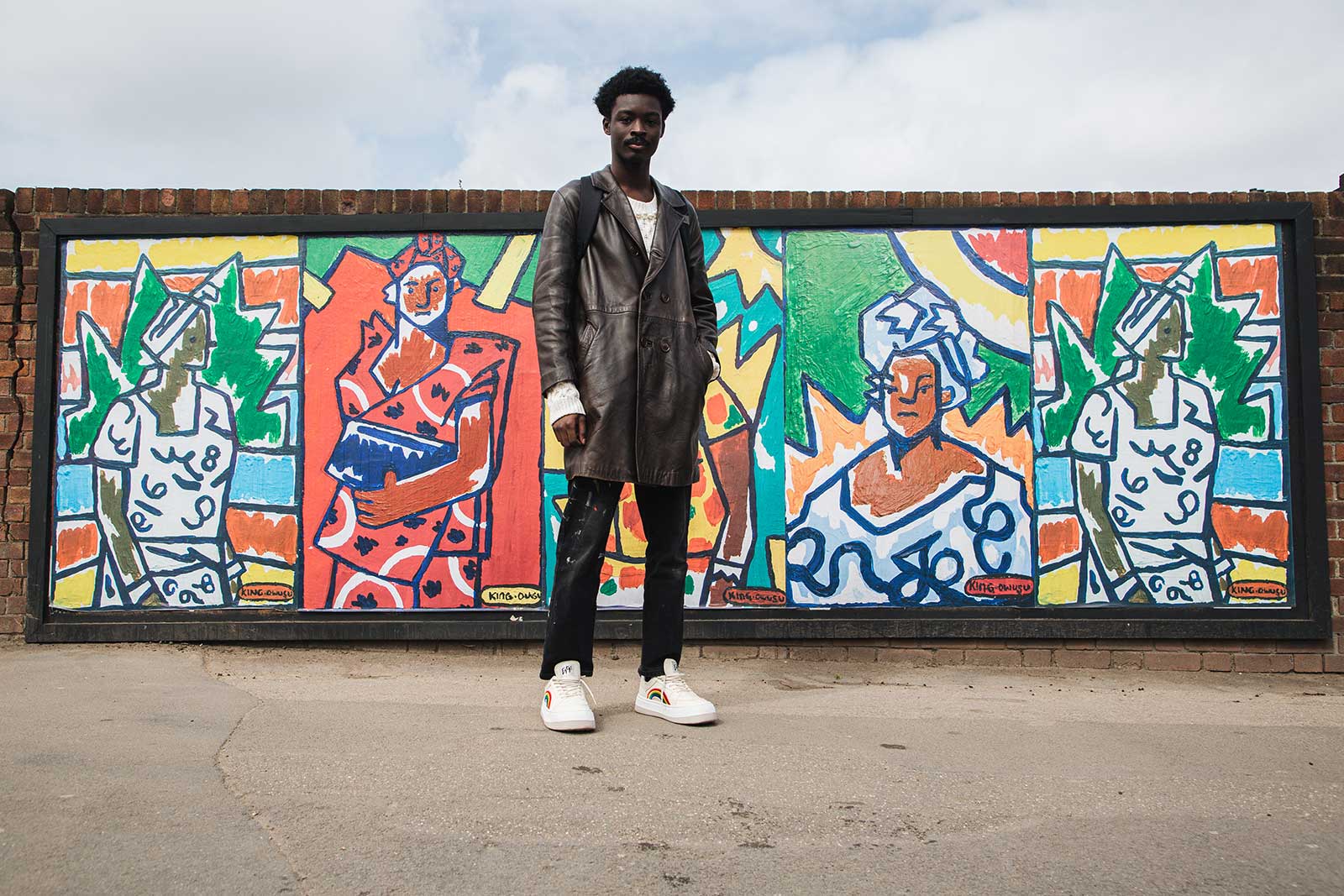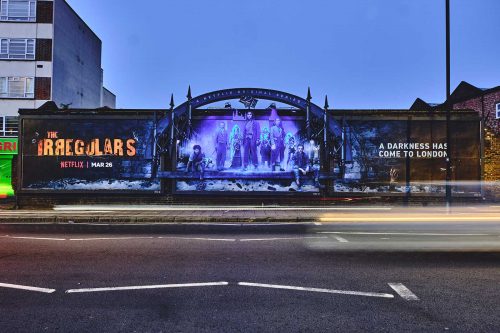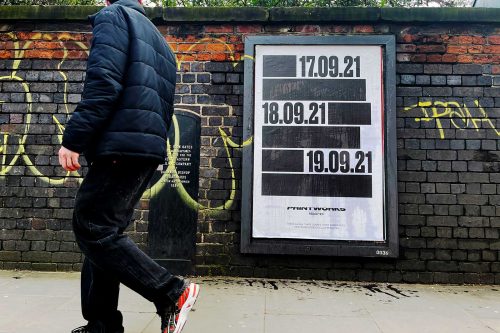Your Space Or Mine
King Owusu
The artist, illustrator, and model celebrates his West African heritage by representing the inspiring matriarchal figures in his Ghanaian-London community
Talking with King Owusu, we return continually to the idea of community. It’s the recurring element that influences, motivates, and facilitates his work as an artist and illustrator. Often drawn in marker pen, his colourful, narrative-led artworks are anchored in a fundamental desire to share some simple truths about humanity, community, and inclusivity, and to enlarge our empathy. He tells us, “One aspect of my work that is really important to me is its accessibility and telling stories that highlight and capture the black experience.”
Not only is his art highly influenced by his roots as the child of Ghanaian parents, it’s also informed by a spirit of generosity. His work is born from and of the communities that raised him, and he’s driven by a desire to give something back. Reflecting on his childhood as the youngest of seven, Owusu recalls, “At home, I was like a little fly on the wall just listening and taking in all the creativity that was being conjured up.” He remembers being particularly inspired by an art project his brother initiated in the local community. “He made all these really beautiful, detailed portrait paintings documenting the people growing up on our estate at the time,” he says, “Such a kind and simple concept.”
London itself is integral to Owusu’s practice, exposing him firsthand to a kind of visceral collaboration-in-action – the exciting moments where cultures collide and witnessing how these encounters can generate something new and dynamic. Growing up in Wood Green in North London, he was surrounded by a vibrant West African community alongside the wider multicultural influences the capital had to offer. “In London, we are blessed to have so many diverse people from all over the world that help build and shape our communities,” he tells us. “I have really appreciated and enjoyed the diversity not just in culture but also in ideas and ambitions.”
Whilst studying design at CSM, Owusu met South London photographer and filmmaker Campbell Addy, who signed him up on sight to his diversity-first agency, Nii. As a model, Owusu has been featured in Love magazine, Dazed & Confused, and Farfetch. Considering the exciting and inextricable relationship between fashion and art, he says, “Fashion also creates the opportunity for art to be made into textiles and for print to be worn. I think about the t-shirts Keith Haring made which made his work more affordable and accessible to a wider audience.”


